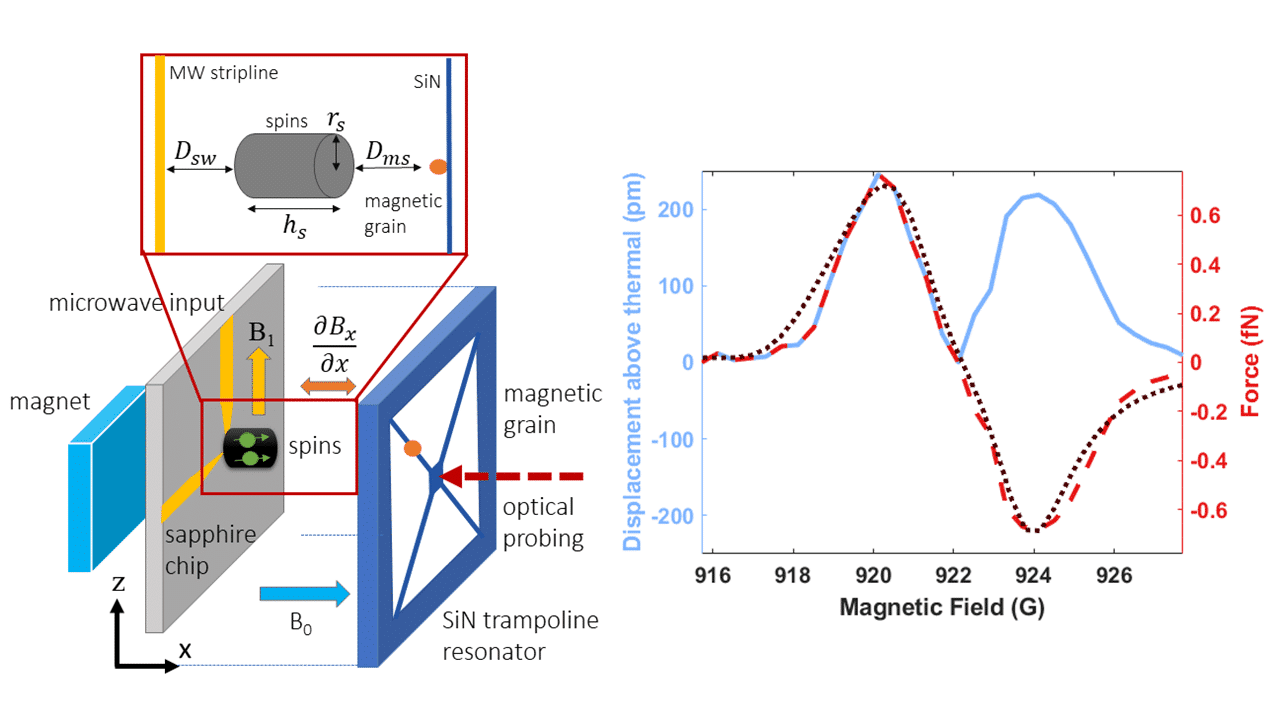
Magnetic Resonance Microscopy towards Membrane-based Cavity Spin-Opto-Mechanics
2JILA, CU Boulder
Stoichiometric silicon nitride (Si3N4) films are a unique material in the field of nanomechanics due to their high internal stress that enables high mechanical quality factors along with high resonance frequencies. Moreover, Si3N4 films display low optical absorption that allow these resonators to be incorporated in a high finesse optical cavity. The combined low optical and mechanical losses enable demonstration of optomechanical phenomena, such as ground-state cooling, precision force and displacement sensing, and microwave-optical transducers.
Here, we explore the benefits of Si3N4 film resonators for sensing of spins using magnetic resonance force microscopy. Our mechanical devices, with resonant frequencies of 1 – 10 MHz, have the potential to couple resonantly to nuclear spins. Resonant coupling opens new paths for detection of nanoscale magnetic resonance force microscopy using transverse magnetization sensing. Additionally, interaction of the resonators with a high finesse cavity enables high displacement sensitivity and high-dynamic-range. This hybrid spin-opto-mechanical coupled system can be used, for example, to polarize spins via an optically cooled mechanical resonator.
Finally, we utilize recent intricate membrane designs to boost spin-mechanics coupling in the MHz frequency range. These are designed to reduce the effective oscillating mass, while mitigating internal and external mechanical losses. We explore both “trampoline” type design, and more complex phononic crystal structure, and demonstrate initial magnetic force sensing of an ensemble of electronic spins at room-temperature at a level of 0.1 fN (see figures).

Figure 1 - (left) Experimental setup for force sensing of electron spins in DPPH with a SiN trampoline resonator. (right) Magnetic field scan of an MRFM resonance. Blue, Calibrated displacement amplitude. Dashed red, analyzed magnetic force. Dotted black, fit to a magnetic force model.

Powered by Eventact EMS